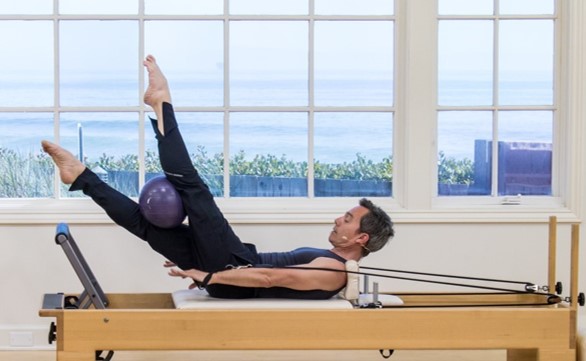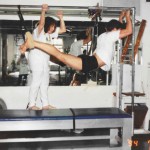Oct 4, 2017
The Challenges of Teaching with Clear Intent
By Peter Roël
CAN YOU MAKE MAYONNAISE?
- 3 egg yolks
- 3 – 5 tablespoons wine vinegar or lemon juice
- 1 ½ – 2 ¼ cups olive oil or salad oil or a mixture of each oil
- ½ teaspoon salt
- ¼ teaspoon dry mustard or prepared mustard
I chose this recipe because it looks simple. Ingredients and kitchen utensils are all prepped, well organized and ready to go. I will execute every step by hand. I memorized the directions and have them with me, just in case. I will first separate the egg yolks in a bowl, beat the oil into the yolks, flavor my mixture and … done?
Unfortunately, no!
The temperature of the ingredients seemed slightly askew. And, after I added about 1/3 cup of oil, my arm got increasingly fatigued from whisking and my coordination was off. I added more oil, but the yolks just couldn’t absorb it fast enough. I did not know how to save it.
So, I had to start from scratch, gradually integrating what I had learned from what I’d done before and redirecting my efforts for the next batch. And now finally, after multiple attempts, my mayonnaise is done. My application and execution of the directions took Concentration, Precision, Centering, Control Breathing and Flowing Movement with practice and learning.
Homemade, hand-beaten, and exhausted.
Jim, Kathy Grant’s husband, observed that the Pilates “Trademark Case” brought Pilates into the mainstream. I had never thought about it. I was dancing as well as teaching both dance and Pilates. The Pilates waters were calm, we did Pilates. You eat, no?! Jim was right. More than anything, controversy has put Pilates permanently on the map. It might or might not be the way Mr. Pilates wanted it, but it is here and here to stay. In 1984, when I started with Kathy Grant (and also later with Romana), I noticed differences in their personal style and approach of teaching Mr. Pilates’ legacy. I came to these women via a referral – to learn and experience. I digested and integrated their information into the knowledge I already had, the experiences of a life in process; in my case, as a competitive gymnast, a track and field sprinter and a teacher/dancer.
 The collective industry that embodies the Pilates method and vocabulary has grown and is growing tremendously, as we know. It is being developed, progressed, twisted and taken for a ride! We are all involved and responsible for this development with our choice and message. Is quality teaching the “product” that we sell?
The collective industry that embodies the Pilates method and vocabulary has grown and is growing tremendously, as we know. It is being developed, progressed, twisted and taken for a ride! We are all involved and responsible for this development with our choice and message. Is quality teaching the “product” that we sell?
What do we have now? A lot of people making a living, networking, alliances, social media, getting the most likes, the most shares, etc. We can ‘follow’ people we have not experienced or met. This has become a new economic standard to live with. More followers equal potentially more income and economic prowess. This, in turn, motivates and influences our intent and choices regarding how to teach, how to run our business, and our quality of life. It is another vehicle to market ourselves, build a base and increase market share.
An example of intent: I decided to bike from Santa Barbara to Carpentaria 2 days in a row when I was taping for Pilates Anytime. The trip is about 10 miles along the coast line. The first day, I did not use the ‘maps’ app on my phone—on purpose. I did not know what to expect. The sun was out, the sky was blue, there were great smells and colors. The light wind had the taste and smell of the ocean and the thick feeling of slow-motion hair in the movies. I made decisions based on what I encountered and the info I got from my surroundings. I ended up partly on a highway, trucks whizzing by and I was not sure if I was getting closer. Only the passing of time was an indication. I felt excited and time seemed to stretch forever. The next day, I had time restrictions, so I used the ‘maps’ app. It was pragmatic and direct, all about following the map correctly. No ‘slow-motion hair in the movies’ feeling, but rather a sense a grounded clarity.
My point is: Pilates is not what is, but what can and will be – in the now, with all our senses. It’s about experiencing movement and training our mind and body through a holistic practice. The teacher is our map and gives us that sense of grounded clarity by framing our session. As a student, we receive and process the information given to us. As the teacher, we give information in a way we think it will be received successfully, which empowers the student. It’s a dialogue that builds empirical data which directs teaching, i.e. my first day on the bike.

The second day, I followed my map. I complied to the directions with the idea that if I wouldn’t make “mistakes,” I would arrive faster. Not making ‘mistakes’ became my objective. I shifted from experiencing input to compliance. It’s a seemingly subtle shift, but an intensely different outcome. I shifted my focus consciously, so I was fine with my outcome. Two days, two intents, two choices, two outcomes, two experiences, two products.
We talk about Pilates being a mind/body system. What does that mean? Really!
Our mind, emotions and thoughts constantly create a new physical reality in the ‘now’. We interact with and live our surroundings, we have our quantifiers (the ingredients): The Pilates vocabulary, method, teacher and clients, the directions, and the desired goal. Our sessions are the framework in which we create and measure our intent. What we don’t have yet is the application, the process of interactions and redirections. This dialogue is both verbal and non-verbal and empowers both parties to contribute and create a cornucopia of new possibilities that are being focused through our intent. Mr. Pilates was a creative genius. Doing, exploring and allowing himself to redirect and grow the vocabulary that did not end up in The Method but helped form it. Would he have received a lot of likes or shares on his redirects?
Influence on intent
The growth and success of Pilates has created a competitive service industry. Quality and product were directly linked. Now, the delivery of our product through speed, together with populism (layman’s feedback, voting online and rating each other) influences what we recognize and consider quality. The industry has shifted from solely teaching therapeutic movement into a spectrum of qualitatively varying products that we package to sell. It shows the innate tension between what is necessary to educate and how to make a profit. Combined with growth, competition and distribution, this has influenced how Pilates is being perceived in and outside our industry. It has changed the ‘quality conversation’ and ‘what is Pilates’ from educating function and form to a range of dogmatic learning with the intent to sell. It’s become a shift to Pilates-Lite, an erosion of what Pilates is, if you will.
It is great to see a movement across our industry that wants to address this issue. What is our message to incoming teachers and potential clients? Pilates provides a scaffolding that allows us to function more easily in our life. We teach awareness by asking questions in relation to who, what, where, when and why. We use The Pilates Method and its principles – our recipe – but more importantly, our application and execution of the directions are where the gold of our industry lays. It sells!
 Peter Roël B.A., PMA®-CPT is the co-founder and co-owner of the Pilates Shop/Yoga Garage in New York City, and the director of the Pilates Shop Teacher Training. Peter moved to New York City in 1983, and danced as a principal dancer with Elisa Monte and the Martha Graham Dance Companies,
Peter Roël B.A., PMA®-CPT is the co-founder and co-owner of the Pilates Shop/Yoga Garage in New York City, and the director of the Pilates Shop Teacher Training. Peter moved to New York City in 1983, and danced as a principal dancer with Elisa Monte and the Martha Graham Dance Companies,
Peter started his Pilates education in 1984 with Kathy Grant, with whom he studied and worked with for 15 years. Peter has been teaching Pilates since 1985 and was certified to teach Pilates by Romana Kryzanowska in 1994.
In 1995, he became qualified to teach Gyrotonic® through Julio Horvath.
From 1996 through 2001, Peter was the co-director, teacher trainer and studio manager at Power Pilates in New York.
Peter provides an integrative and individualized approach to his Pilates teaching because of a lifetime as a competitive track-and-field athlete and gymnast, dancer and dance educator. Peter studies with Irene Dowd and Deborah Lessen in NYC, where he teaches clients and gives continuing-education workshops.

